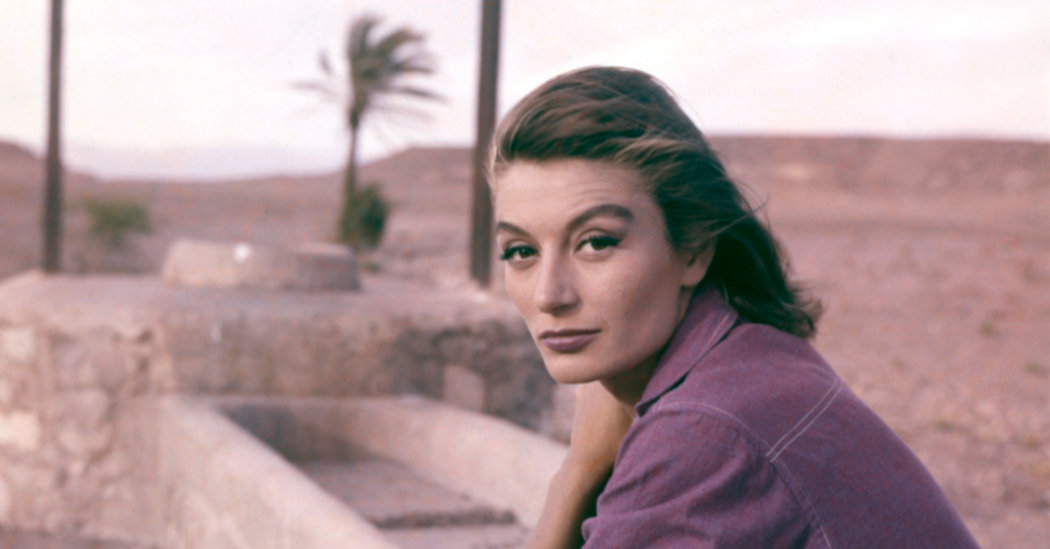Anouk Aimée, the French film actress who became an international sex symbol as the aloof, enigmatic and sensual star of Claude Lelouch’s 1966 romance “A Man and a Woman,” died on Tuesday at her home in Paris. She was 92.
Her death was announced on social media by her daughter, Manuela Papatakis.
By the time she appeared in “A Man and a Woman,” Ms. Aimée had already made a considerable impression in international film, particularly in Federico Fellini’s “La Dolce Vita” (1960), in which she played a sex-hungry Italian socialite, and Fellini’s “8 ½” (1963), in which she portrayed the lead character’s jealous but patient wife.
But it was with “A Man and a Woman,” a 28-year-old director’s low-budget project that went on to win the Oscar for best foreign film, that Ms. Aimée created the image that endured throughout her career.
As an emotionally reluctant young widow and movie-industry script girl, she falls in love with a racecar driver and widower played by Jean-Louis Trintignant. Their long, long-awaited kiss, enhanced by a circling camera and Francis Lai’s hit theme, became one of the era’s most revered and recognizable movie images.
Ms. Aimée was nominated for a best actress Oscar for the role. It also brought her the BAFTA film award for best foreign actress and the Golden Globe for best motion picture actress.
In 2002 she received an honorary César, the French equivalent of the Academy Award, for career achievement. She was named best actress at the 1980 Cannes International Film Festival for a darkly comic role, that of a mentally disturbed woman whose brother hopes she will commit suicide, in the Italian film “Salto nel Vuoto,” released in the United States as “Leap Into the Void.”
Ms. Aimée’s film career was predominantly European, and her relatively few American films were less than great successes. She was part of the all-star cast of “Ready to Wear” (1994), Robert Altman’s poorly received satire about the fashion industry. A quarter-century earlier she had played the title character of the 1969 drama “Justine,” directed by George Cukor. In a 2000 interview with The Palm Beach Post, she recalled her unsatisfactory working relationship with Cukor. “I kept talking about Fellini,” she said, “and he kept talking about Garbo.”
Nicole Françoise Sorya Dreyfus was born on April 27, 1932, in Paris, the daughter of Henri Dreyfus, who had acted in films under the name Henry Murray, and Geneviève Sorya, who also had a film acting career.
At 13, Françoise was approached by Henri Calef, a director who cast her in “La Maison Sous la Mer,” released in 1947. She was billed simply as Anouk, her character’s name. The surname Aimée, the French word for “loved,” was added later.
Still a teenager, she received international attention as a modern-day Juliet in “The Lovers of Verona” (1951). The critic Bosley Crowther, writing in The New York Times, hated the movie, but pronounced the young Ms. Aimée “a lovely and enterprising miss.”
Ms. Aimée had starring roles in Jacques Demy’s “Lola” (1961), a New Wave soap opera about a cabaret entertainer, and in his “Model Shop” (1969). She played an art student in “Les Amants de Montparnasse” (1958), a biography of the artist Modigliani released in the United States in 1961.
“A Man and a Woman 20 Years Later,” Mr. Lelouch’s 1986 sequel starring Ms. Aimée and Mr. Trintignant, was a box-office flop in France and the United States. Their next try, “The Best Years of a Life” (2019), fared somewhat better. Although critics found the story oversentimental (the characters meet again in old age), the film hit “occasional sublime grace notes,” as The Hollywood Reporter noted.
She continued to work in European film and television well into her 80s. Her last American film was Henry Jaglom’s “Festival in Cannes” (2002), in which she played an aging European screen legend. “The Best Years of a Life” was her last film, preceded by “Tous les Soleils” (2011), about a lonely music professor, and “Mince Alors!” (2012), a comedy about a weight-loss retreat.
Ms. Aimée married and divorced four times. Her longest marriage, from 1970 to 1978, was her last, to the British actor Albert Finney. Her first marriage (1949-50) was to Edouard Zimmermann, and her second (1951-54) was to the film writer and director Nikos Papatakis, with whom she had a daughter. Her third husband (1966-69) was Pierre Barouh, a French actor and composer whom she met when he played her character’s dead husband in “A Man and a Woman.”
In addition to her daughter, her survivors include a granddaughter and great-granddaughter.
Ms. Aimée expressed strong opinions over the years on any number of topics, including politics and fashion, but she was less forthcoming about herself. At the most, she suggested a certain passivity or sense of fate when it came to her life.
Interviewed in Cannes in 1986 by journalists including Roger Ebert of The Chicago Sun-Times, she looked back on her career, recalling that she had been “discovered,” in the old Hollywood sense, when she was an adolescent.
“I didn’t choose,” she said. “I took it all for granted.”
And interviewed by The Times in 1967 about working with the director and her co-stars on “A Man and a Woman,” the film that had just changed her life, Ms. Aimée said simply, “We met, we all met, at the right time.”
Derrick Bryson Taylor contributed reporting.















